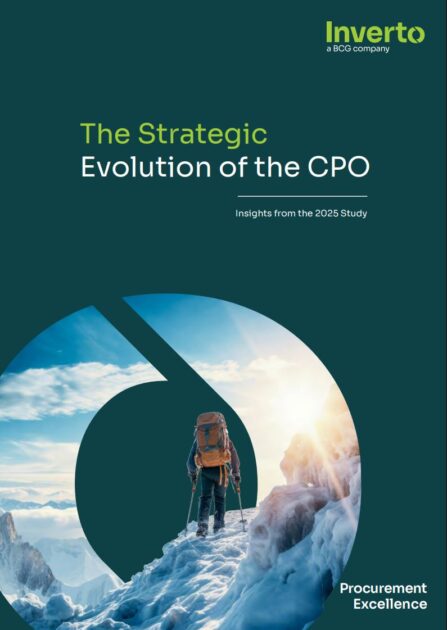How is your procurement function evolving within the organization?
We’ve undertaken a significant transformation—building a global procurement organization from the ground up over the past four years. What began as a decentralized, transactional structure is now evolving into a strategic function covering the full spend base—over €5 billion across direct and indirect categories.
Our operating model is built around three pillars:
- Fuel: driving bottom-line and cash performance
- Protect: managing risk and embedding sustainability
- Leverage: maximizing group synergies and process consistency
We’ve established a global core supported by local leads embedded in affiliates worldwide. The next step is maturing this into a fully aligned, value-generating function across all levels of the business.
What are the main business challenges—and how is procurement contributing?
Our sector is facing macroeconomic headwinds in major markets, including the U.S. and Asia. At the same time, we’re investing heavily in new production capacity—so margin optimization and cash discipline are critical.
Procurement supports this by delivering structured efficiencies, improving cost visibility, and building credibility with the business through measurable, repeatable results. We also play a growing role in supporting risk awareness and navigating regulatory shifts, particularly around sustainability (e.g., CSRD and Scope 3).
What’s your approach to capability building within the team?
We’re still in the construction phase. The team is a mix of internal talent and external hires, and we’ve launched a Procurement Academy to accelerate upskilling. Our objective is to develop strategic partners—not just operational buyers.
This means:
- Understanding the business model
- Translating procurement impact into P&L terms
- Navigating ambiguity and adapting quickly when strategies shift
- Balancing technical depth with leadership presence
We emphasize soft skills as much as technical ones—particularly the ability to influence without authority, challenge constructively, and adapt procurement strategy to rapidly changing business needs.
What is procurement’s position in relation to finance and the executive team?
Procurement has become more visible within the leadership agenda, particularly as cost control and financial discipline gained prominence. That said, much of the recognition still depends on demonstrable P&L impact.
One of our challenges has been aligning procurement efficiencies with financial reporting. Savings are often reinvested or diffused across global markets, making impact hard to track. We’re working on shared tools with Finance to better capture and communicate value. Stronger integration with finance is not just desirable—it’s essential.
What’s your stance on innovation and sustainability as procurement levers?
Innovation is not currently a core focus for procurement. It remains decentralized in our company structure, and we’ve chosen to prioritize foundational capabilities before building innovation frameworks.
Sustainability, particularly Scope 3 emissions, is rising on the agenda. We’ve made progress in modeling and supplier engagement—but stronger cross-functional ownership is still needed. Embedding sustainability into procurement strategy is not a question of if, but when—and we need to be structurally ready when that shift accelerates.





